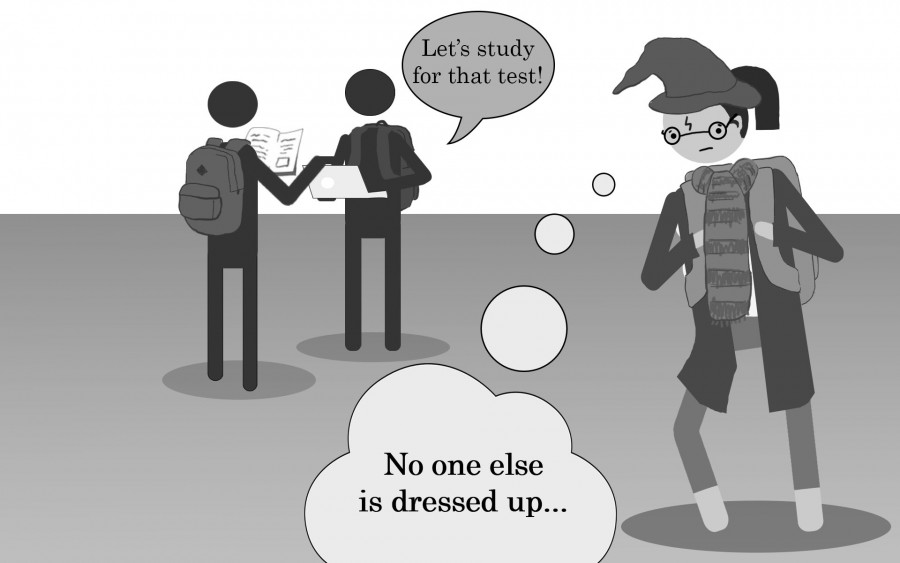School Should Strive for More School Spirit
In many important ways, our school has a strong community. For instance, students are supportive of each other and proud of the school’s academic accomplishments. However, in other ways our school spirit is sorely lacking compared to other schools in the area.
Take this year’s homecoming week. Few students outside of ASB and homecoming court members dressed up. Although ASB worked to make the assembly more inclusive, not all classes were engaged or enthusiastic in the class competitions.
This is because too many of our students spend more hours fretting about their next math test or upcoming essay than thinking about how to enjoy their high school experience. But our students should realize that school spirit is valuable. More school spirit will enhance our school’s community to become a more memorable, connected place that students are proud to be a part of.
School is more than a place to learn. School should function as a community where students can come together regardless of academic standing — a community where students display pride for their school connects students in ways that academics can’t. It gives everyone a place to belong and ways to develop unique bonds with each other.
Strong school spirit actually relieves a large amount of student academic stress. Even at Palo Alto (Paly) and Gunn High Schools, some of the most stressful campuses in the area, spirit is an outlet for students to relieve academic anxiety.
“It’s a way for us Gunn students to get away from the classroom,” Gunn class council member Josh Spain said. “That’s why it’s so big in the Palo Alto school district, [where it addresses] all the problems that PAUSD is notorious for. It’s a way for us… to not talk to each other about the test we just had and not talk to each other about the homework.”
Many of our students believe that having spirit is not worth the time, effort or embarrassment to dress up and participate. But it’s only embarrassing to be an active participant in school activities if no one else dresses up or cheers as loudly.
Instead of scoffing at fun-oriented rallies and events, our students should follow the example of Paly and Gunn in creating a tradition of enthusiasm around non-academic events. School spirit is only possible when upperclassmen set an example and encourage others to show enthusiasm.
One excellent example is Paly’s highly successful annual spirit week, during which approximately 80 to 90 percent of the student body participates. Formerly homecoming week, Paly’s spirit week includes dress-up days, class float-building competitions and a dance.
Each class dresses up in a creative subcategory. For example, one day’s theme was salad, so the freshmen dressed up in athletic clothes to represent “Healthy Choice” dressing, while the seniors sported togas in spirit of Caesar salad dressing. Last year, Paly also hosted Hogwarts Week, a spirit week where students show school enthusiasm in Harry Potter-themed trivia, activities and quidditch.
Our school needs to find its own way of increasing spirit in a unique, memorable way while inspiring younger students to participate in school traditions. ASB is already trying to improve student participation and enthusiasm. But they can’t take all the burden, just like they don’t at other schools; it’s up to our students to shift their mindsets toward school spirit. If other schools can create a better school experience for themselves, then we can too.



